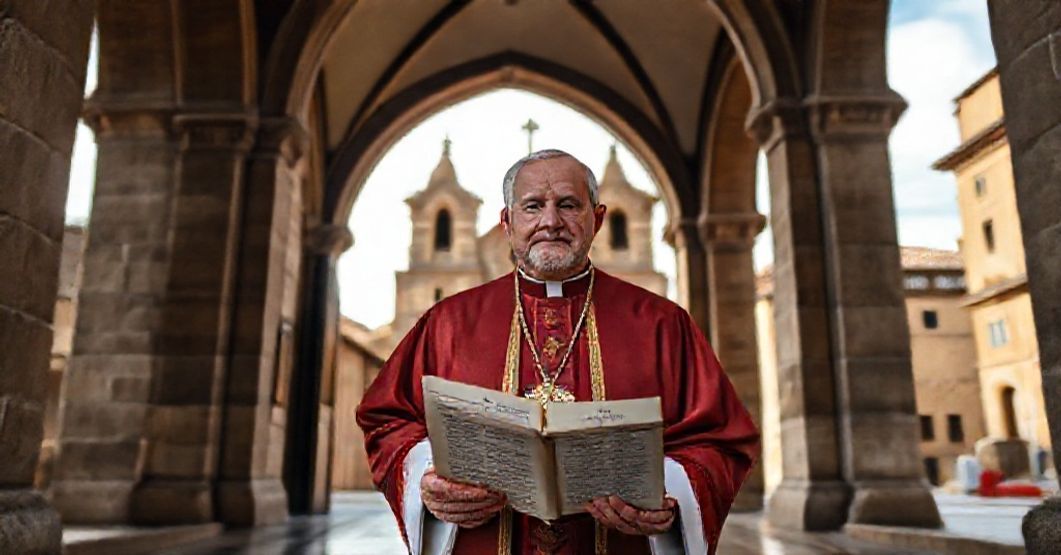Antipopes of the Antichurch



















Timeline of this heretical pontiff
Encyclical Letters
+ 15 posts1959
+ 7 posts1961
+ 4 posts1962
+ 2 posts1963
+ 2 postsApostolic Exhortations
+ 3 postsApostolic Constitutions
+ 93 posts1958
+ 6 posts1959
+ 87 postsMotu Proprio
+ 15 posts1958
+ 1 posts1959
+ 1 posts1962
+ 11 postsApostolic Letters
+ 151 posts1958
+ 4 posts1959
+ 63 posts1960
+ 78 posts1961
+ 1 posts1962
+ 4 posts1963
+ 1 postsSpeeches
+ 99 posts1958
+ 2 posts1959
+ 26 posts1960
+ 29 posts1961
+ 16 posts1962
+ 24 postsMessages
+ 6 posts1959
+ 4 postsHomilies
+ 4 postsLetters
+ 152 posts1958
+ 1 posts1959
+ 48 posts1960
+ 32 posts1961
+ 31 posts1962
+ 30 posts1963
+ 10 postsNot categorized
+ 1 posts1958
+ 1 postsNews feed


Oxomensis (Soriana) (1959.03.09)
A short Latin decree issued under the name of John XXIII modifies the Diocese of Osma in Spain by adding the title “Soriana” and elevating the church of St Peter in Soria to the rank of a concathedral, delegating execution to the nuncio and providing the usual juridical formulas for validity and promulgation. Behind this seemingly technical act stands the self-assertion of a usurper installing his authority into the hierarchical fabric on the eve of the conciliar revolution, thereby contaminating the visibility of the Church’s structure at its most concrete level.


ORIOLENSIS (1959.03.09)
The document issued in Latin on March 9, 1959 by John XXIII under the title “ORIOLENSIS (LUCENTINAE)” is a juridical act concerning the diocese of Orihuela (Oriolensis) in Spain. It:
– Adds “Lucentina” to the diocesan title, establishing “Oriolensis-Lucentina” as the new combined name for the diocese and its bishop.
– Elevates the church of St. Nicholas in Alicante (Lucentum) to the rank of concatedral (co-cathedral) with corresponding rights and obligations.
– Grants the diocesan bishop the faculty to reside in Alicante and extends canonical functions there to certain canons and beneficiaries.
– Commissions the Apostolic Nuncio in Spain to execute and record the provisions, reinforcing their binding force and threatening canonical penalties for resistance.
Behind this apparently technical reconfiguration of ecclesiastical structures stands the same juridical and theological imposture: the usurping authority of John XXIII and the conciliar revolution which would soon devastate the visible structures of the Church of Christ.


MINDONIENSIS (1959.03.09)
The constitution attributed to John XXIII under the title “MINDONIENSIS (FERROLENSIS)” decrees two institutional changes: it joins the title “Ferrolensis” to the diocese of Mondoñedo, and it elevates the church of St. Julian in Ferrol to the rank of concathedral, allowing the diocesan ordinary to reside there as needed. Behind this apparently technical rearrangement stands the typical juridical facade of the conciliar revolution: a pseudo-pontifical act that, while outwardly conservative and canonical in form, proceeds from an authority already separated from the integral Catholic Magisterium and instrumentalizes ecclesiastical structures for a new religion.


Calaguritanae et Calceatensis (1959.03.09)
John XXIII’s apostolic constitution declares a purely juridical adjustment: the historical Diocese of Calahorra and Calceatense receives the added title “Logroñensis,” the Marian church “de la Redonda” in Logroño is elevated to concathedral, and canons may exercise capitular functions there. The entire text wraps this minimalist administrative act in solemn formulas of papal authority and threats of canonical penalties.
Varia
Announcement:
– News feed –implemented
– Antipopes separate web sites with their all documents refutation – in progress
